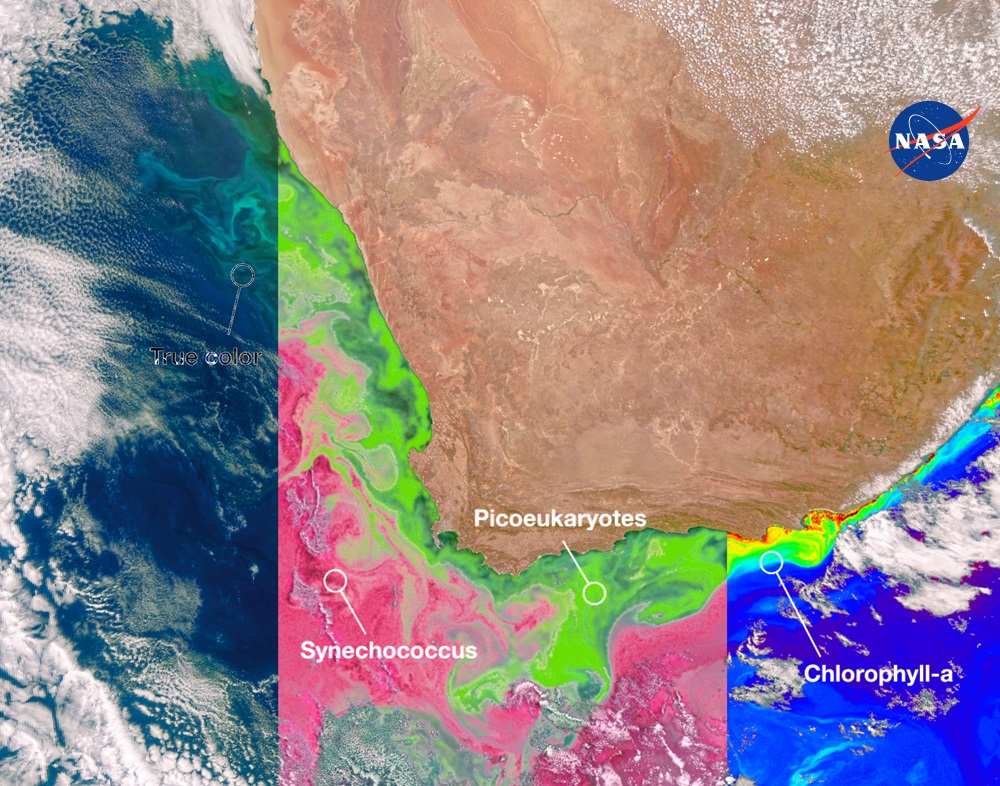Extremely high quality images that will change the way we see our planet
[16 Aprile 2024]
NASA is releasing world-class science data from its newest Earth-observing satellites Plankton, Aerosol, Cloud, and Ocean Ecosystem (PACE), providing first-of-its-kind measurements of ocean health, air quality, and the impacts of climate change.
The PACE satellite was launched on February 8, and after undergoing several weeks of in-orbit testing of the spacecraft and instruments to ensure proper functioning and data quality, it is now collecting and transmitting Data that can be accessed freely This, they explained to NASA, “will allow researchers to study microscopic life in the ocean and molecules in the air, improving understanding of issues such as the health of fisheries, Harmful algae blooms, air pollution, and smoke from wildfires. Through PACE, scientists can also study how the ocean and atmosphere interact with each other and are affected by climate change.
NASA Administrator Bill Nelson stressed, “These exceptional images reinforce NASA’s commitment to protecting our home planet. PACE observations will give us a better understanding of how our oceans and waterways and the tiny organisms that live in them affect Earth. From coastal communities to fisheries, NASA is collecting climate data that is important for all people.”
Karen St. Germain, director of NASA's Earth Sciences Division, added, “The first image from the PACE mission represents an important milestone in our ongoing efforts to better understand our changing planet.” Earth is a watery planet, but we know more about the surface of the moon than we do about our oceans. PACE is one of several key missions — including SWOT and the upcoming NISAR mission — that herald a new era of Earth sciences.
The satellite's Ocean Color Instrument, built and operated by NASA's Goddard Space Flight Center, monitors the ocean, land and atmosphere through a spectrum of ultraviolet, visible and near-infrared light. While previous Ocean Color satellites could only detect a few wavelengths, PACE detects more than 200, and thanks to this broad spectrum, scientists can Identify specific phytoplankton communities. At NASA, they highlight that “different species play different roles in the ecosystem and in the carbon cycle – most benign, but some harmful to human health – so distinguishing between phytoplankton communities is a key mission for the satellite.”
PACE multi-angle polarimeter HARP2 and SPEXone measure polarized light reflected from clouds and small particles in the atmosphere — aerosols — which can range from dust to smoke to seawater spray and more. The two polarizers are complementary: SPEXone, built by the Netherlands Institute for Space Research (SRON) and Airbus Netherlands, will observe the Earth with hyperspectral resolution – detecting all the colors of the rainbow – from five different viewing angles. HARP2, built at the University of Maryland-Baltimore, will monitor four wavelengths of light, with 60 different viewing angles. NASA asserts that “with this data, scientists will be able to measure cloud properties – which are important for understanding climate – and monitor, analyze and identify aerosols in the atmosphere to better inform the public about air quality. Scientists will also be able to learn how aerosols interact with clouds and influence cloud formation, which is essential for creating accurate climate models.
Jeremy Werdel, PACE project scientist at NASA Goddard, is excited and concludes: “We have been dreaming of images similar to PACE for more than two decades. It's surreal to finally see the truth. The data from all three tools is of such high quality that we could begin distributing it publicly two months after launch, and I'm proud of our team for making this possible. “Not only will this data have a positive impact on our daily lives by providing information about air quality and the health of aquatic ecosystems, but over time it will also change the way we see our home planet.”

“Internet trailblazer. Travelaholic. Passionate social media evangelist. Tv advocate.”







More Stories
Franco Di Mare is with him during his illness. His “women”: his daughter Stella, whom he adopted in Kosovo, his sisters, and his partner, Julia. “I was running alone”
Listen to the haunting sound of space thunder recorded on Venus in 1982
Watch a real video of the comet's surface